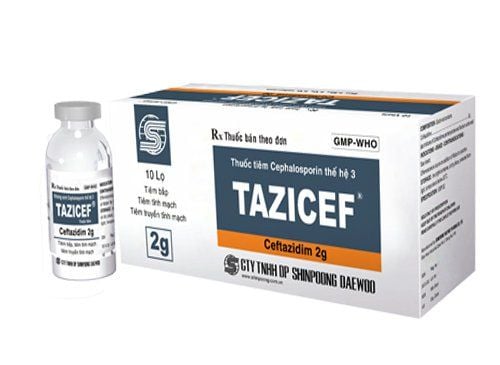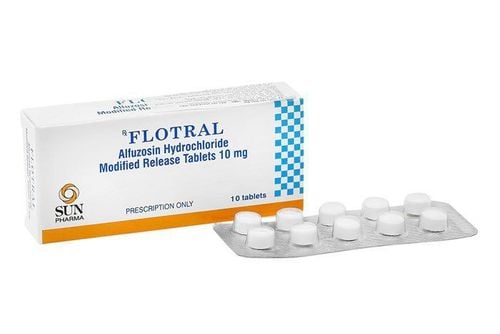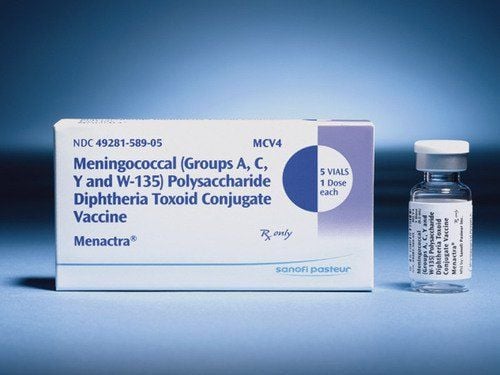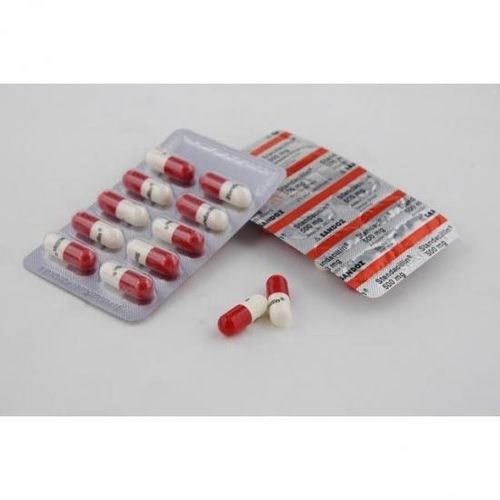This is an automatically translated article.
Vitazidim 0.5g contains Ceftazidime and is used to treat a wide range of bacterial infections. These infections can affect the chest (bronchitis or pneumonia), ears, nose, throat, bladder and urinary tract, skin and soft tissues, stomach, or bones. Accordingly, Vitazidim belongs to the group of cephalosporin antibiotics and works by killing the bacteria that cause these infections.1. What is Vitazidim 0.5g?
Vitazidime 0.5g belongs to a group of drugs called cephalosporins with the main ingredient being Ceftazidime with a strength of 0.5 g. This is an antibiotic that is used by adults and children (including infants). Vitazidim 0.5g works by killing strains of bacteria that cause infections.Accordingly, the drug Vitazidim 0.5g is used to treat severe bacterial infections in the organs:
Lungs or chest. Brain (meningitis). Ears. Urinary. Skin and soft tissues. Abdomen and abdominal wall (peritonitis). Bones and joints. In addition, Vitazidim 0.5g or Ceftazidime may also be used:
To prevent infection during prostate surgery in men. For the treatment of patients with a low white blood cell count (neutropenia) with a fever due to a bacterial infection.
2. Things to know before using Vitazidim 0.5g
Do not use Vitazidime 0.5g or Ceftazidime in the following cases:If you are allergic to ceftazidime or other ingredients of the drug. If you have had a severe allergic reaction to any other antibiotics (penicillins, monobactams and carbapenems) you may also be allergic to Ceftazidime. In addition, patients must be aware of certain symptoms such as allergic reactions, nervous system disturbances, and gastrointestinal disturbances such as diarrhea while being prescribed Vitazidime or Ceftazidime.
Also, you should not take Vitazidim or Ceftazidime without talking to your doctor if you are also taking:
An antibiotic called chloramphenicol. An antibiotic called an aminoglycoside, eg gentamicin, tobramycin. Diuretics such as furosemide.
3. How to use Vitazidim 0.5g
Vitazidim 0.5g is only used when prescribed by a doctor and used by a nurse or any medical staff. Accordingly, the drug can be given into the body as an intravenous infusion or injected directly into a vein or into a muscle.The exact dose of Vitazidim 0.5g or Ceftazidime for each patient will be determined by the doctor and depends on: Severity and type of infection; whether the patient is also taking any other antibiotics; weight and age or kidney function.
For infants (0 - 2 months): For every 1 kg of baby's weight, the child will be given 25 to 60 mg of Ceftazidime per day in two divided doses. For infants (over 2 months) and children weighing less than 40 kg: For every 1 kg of an infant or child's weight, they should be given 100 to 150 mg of Ceftazidime per day in three divided doses. Up to 6g per day. For adults and adolescents weighing 40 kg or more: The usual dose is 1 to 2 g of Ceftazidime three times daily. The maximum is 9 g per day. For patients over 65 years: The daily dose is usually the same as above but should not exceed 3g per day, especially if the patient is over 80 years of age. For patients with problems with kidney function: The patient may be prescribed a dose different from the usual dose. Your doctor will decide the appropriate dose, depending on the severity of your kidney disease. Your doctor will also need to check your kidney function more often during treatment with Vitazidim.
4. Possible side effects when taking Vitazidim
Like all medicines, Vitazidime or the antibiotic Ceftazidime can cause side effects, although not everyone gets them.The side effects that have been reported in patients treated with Vitazidim are listed as follows:
Diarrhea . Swelling and redness along the vein. Skin rash may be itchy, painful at the injection site. In addition, patients may face the risk of serious allergic reactions side effects. Signs include a raised and itchy rash, swelling, sometimes on the face or mouth, making it difficult to breathe. A skin rash, which may blister and look like small pimples (the central dark spot surrounded by a lighter area, with a dark ring around the edge). Rash and peeling skin. (This could be a sign of Stevens-Johnson syndrome or toxic epidermal necrolysis.) Nervous system disorders: Tremor, edema and in some cases coma. These have happened in people when the dose of the medicine received was too high, especially in people with kidney disease. Other uncommon side effects:
Enteritis may cause abdominal pain or diarrhea may be bloody. Thrush - a fungal infection of the mouth or vagina. Headache. Dizzy. Feeling sick. Fever and chills. In a nutshell, Vitazidim 0.5g contains ceftazidime, a cephalosporin antibiotic, which works by killing susceptible bacteria. Vitazidim is used intravenously three times a day to be effective against some infections. Depending on the patient's condition and accompanying factors, the patient will be assigned and considered the appropriate dose of Vitazidim 0.5g, both to achieve the effect of controlling the infection, and to limit the possible side effects. again.
Reference source: www.hpra.ie; www.wsh.nhs.uk; www.fresenius-kabi.com; hawkesbay.health.nz
Please dial HOTLINE for more information or register for an appointment HERE. Download MyVinmec app to make appointments faster and to manage your bookings easily.













